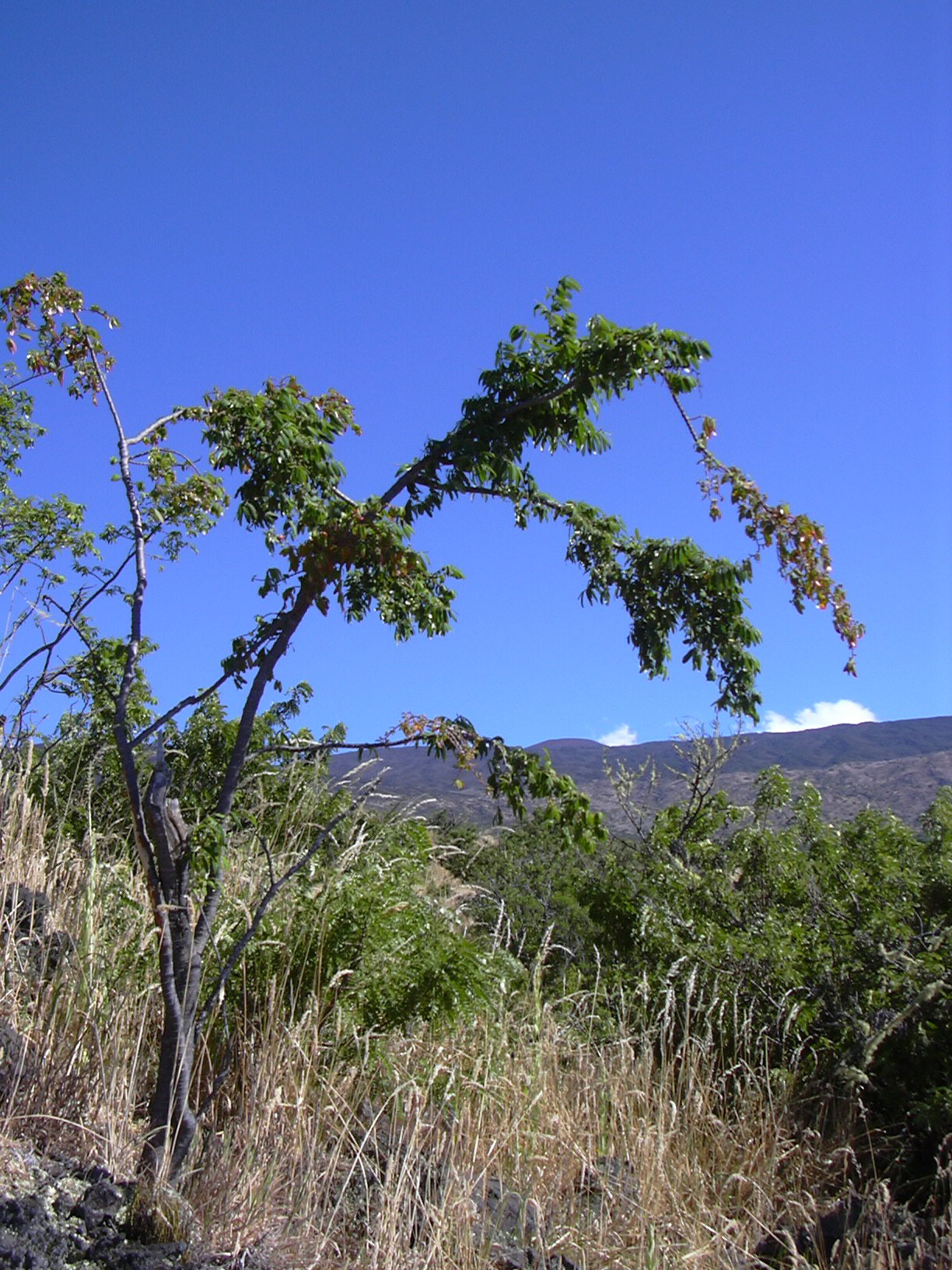Alpine sandmat
(Euphorbia olowaluana)

Description
Euphorbia olowaluana (syn: Chamaesyce olowaluana), known in Hawaii as -akoko, is a trees up to 9 m tall (perhaps the tallest Chamaesyce in the entire genus of 250 species worldwide!). The specific epithet olowaluana is named after Olowalu, West Maui, one of the locations where this species is found. Stems: Trunk 2-7(-9) m tall 10-20(-30) cm in diameter. Branches glabrous to pilose, especially at the nodes. Stems produce a considerable flow of latex when bruised or cut.Leaves: Opposite, distichous (growing in two vertical rows), elliptic to lanceolate or rarely linear, 20-70 mm long, 4-15 mm wide, glabrous or pilose on lower surface and at basal margin, margins entire, apex acute, mucronulate, rarely retuse or truncate, base cuneate, oblique, petioles 1-3 mm long, lower surface pilose to glabrate, stipules acute to acuminate-triangular, 1-4 mm long, pilose to villous, erose, ciliate.Flowers (cyathia): Solitary in the leaf axils or on shortened, much-reduced branches, peduncles 1-3 mm long, glabrous to villous; involucre campanulate, 1.5-2(-2.5) mm high, 2-3 mm wide, glabrous or pilose beneath the glands, glands 4, pilose to villous; styles red, bifid at least 1/2 their length, 0.5-1 mm long, pubescent; stigma thickened. The pungent flowers of -akoko have been described as smelling like bad breath. Fruit (capsules): Green, 2-3.5 mm long, glabrous to pilose, gynophores (stalk which supports the the ovule-producing part of the flower, elevating it above the branching points of other floral parts) recurved, exserted 2-4 mm from involucre, pilose.Seeds: Grey to brown, 1.5-2 mm long, rugose.
Taxonomic tree:







